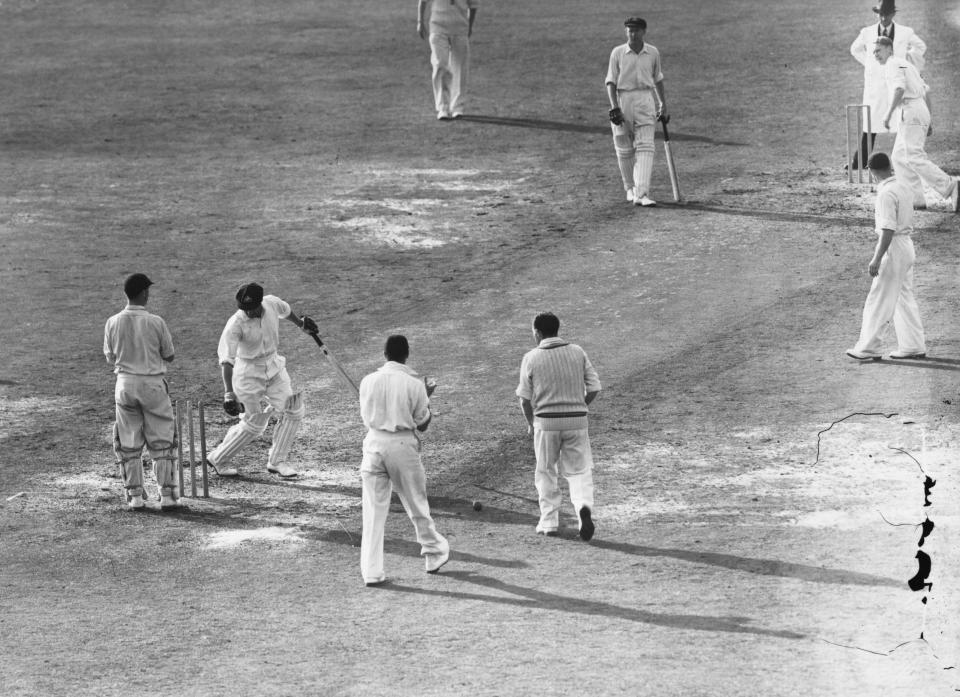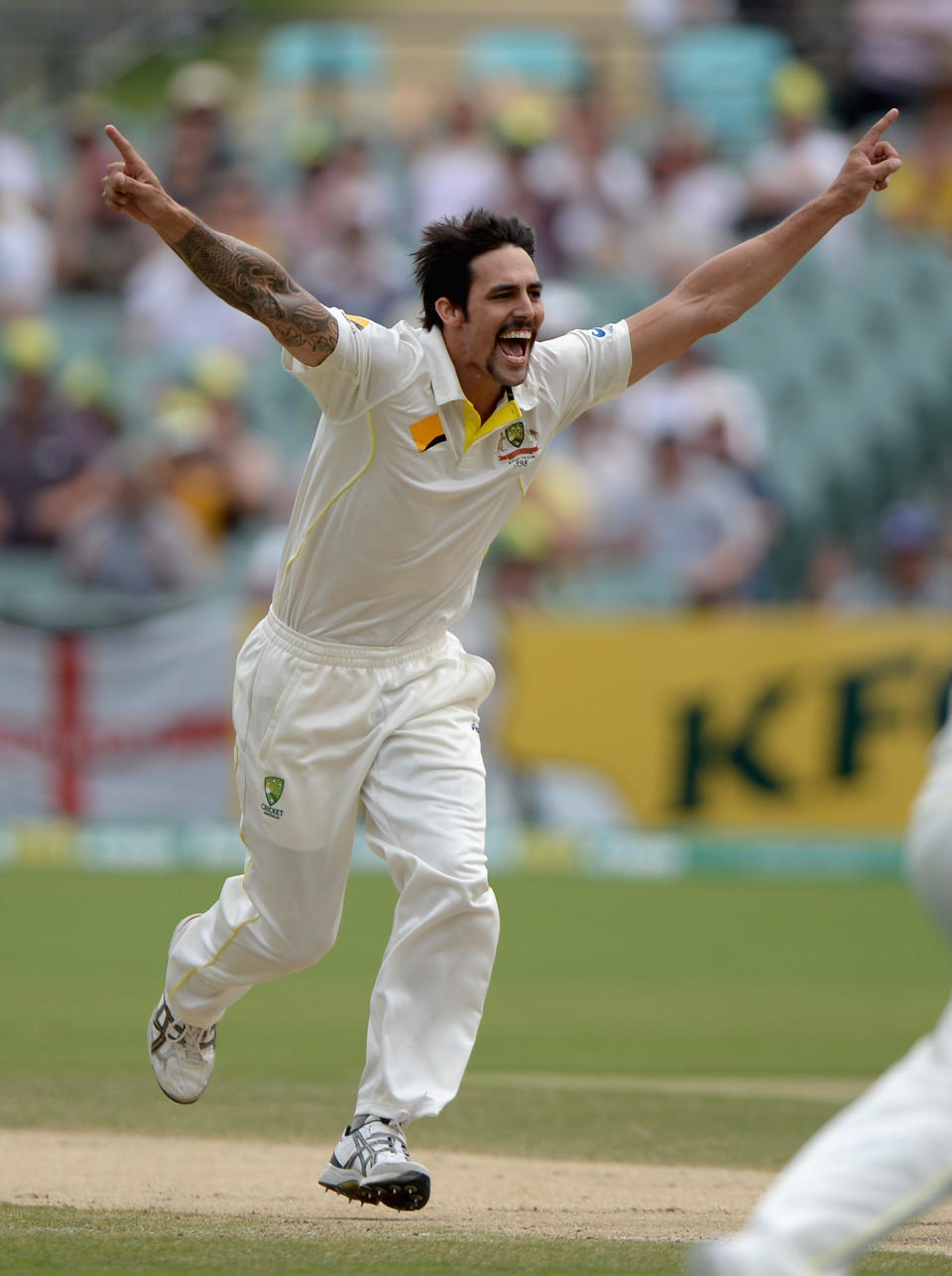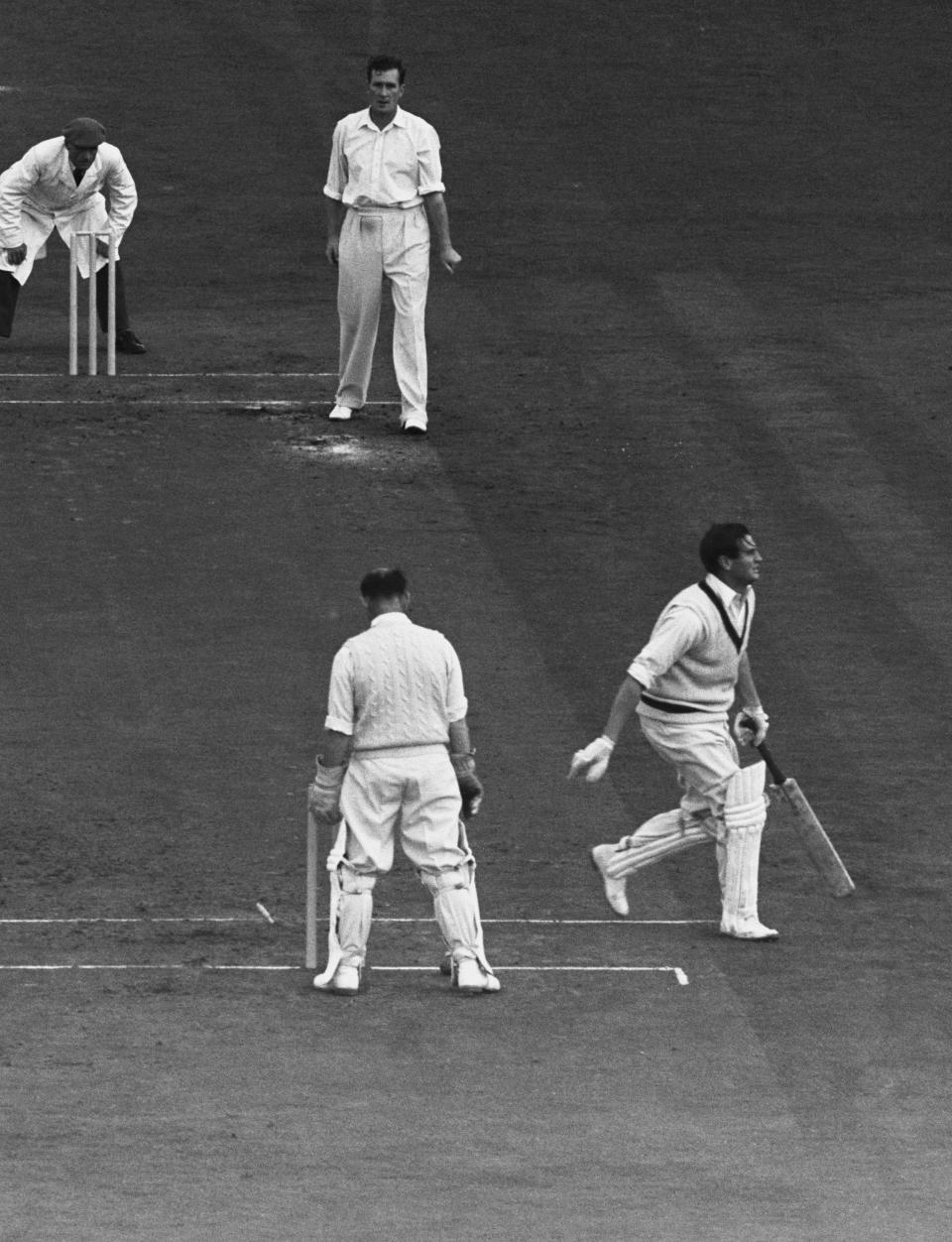Ashes icons: 4 players who made the series their own

As England prepare to defend the Ashes, Chris Stocks looks back at some of the players who have become as big – if not bigger – than the famous series itself.
Donald Bradman (Australia)
The ‘Don’ as he was affectionately known made his Test debut against England at Brisbane in 1928 in what was only his tenth first-class match. Australia lost that by 675 runs, with Bradman scoring only 19 in all.
How things were to change, though, over the coming decades, with Bradman signing off in 1948 by leading his country to not just what represented his fifth Ashes series win but an unbeaten tour as well. This team was to become known as ‘The Invincibles’ and they were led by a man whose feats in cricket were to become immortal.
READ MORE: Geraint Jones on The Ashes, abuse from Australian fans and THAT catch in 2005
READ MORE: The BEST Ashes XI of all time
READ MORE: The WORST Ashes XI of all time
In all, 19 of Bradman’s 29 Test centuries came in the Ashes, with two of those triple hundreds and another six doubles.

Such were Bradman’s powers that England specifically designed a tactic in Bodyline that rocked the sport to its very core in order to try and subdue his influence on their 1932-33 tour of Australia. Bradman still scored 396 runs in that series at an average of 56.57. However, given his career average against England was 89.78, it was not enough to prevent Australia from slipping to defeat.
Bodyline, the brainchild of ruthless England captain Douglas Jardine, was a measure dreamt up following Bradman’s record-breaking tour of England in 1930, when he hit 974 runs in five Tests at an average of 139.14. Nobody has scored more in a single Test series.
Perhaps the only regret Bradman had at the end of his career was the duck he made in his final innings – fittingly against England at The Oval in 1948. Needing just four runs for a career average of 100, he was bowled for nought by Eric Hollies and saw his average permanently stuck on 99.94. It’s a number that will never be forgotten. The same is true of Bradman.
Mitchell Johnson (Australia)
If one man’s Ashes career encapsulated triumph over adversity it is Johnson’s. After underwhelming performances that at times bordered on shocking during the 2009 and 2010-11 series, the Australia fast bowler blew England away in 2013-14 to propel his team to a crushing 5-0 whitewash.
Johnson’s 37 wickets at 13.97 was perhaps the greatest single display of fast bowling in the modern era. England’s batsmen simply had no answer as his previous inconsistency disappeared and he produced spell after unrelenting spell of fearsome pace that shocked the touring party to its very core.

Johnson had not even been included in Australia’s squad for the Ashes in England the previous summer after his past failures. However, time spent with mentor Dennis Lillee, the great Australian fast bowler, had helped him find the consistency he had previously lacked as well as an extra yard or two of pace. It was to prove a devastating combination when England returned Down Under just two months after they had beaten the Australians 3-0 at home in the first instalment of back-to-back Ashes series.
Johnson had been mercilessly baited by the Barmy Army in 2009, when at one point during the second Test at Lord’s he failed to even land the ball on the cut strip, and again in 2010-11, when apart from one performance in Perth he cut a sad, lonely and ineffectual figure during Australia’s 3-1 defeat.
Three years later, though, the Queenslander rammed those taunts back down his tormenters’ throats. It was some sight and some comeback. Johnson’s last series against England in 2015 saw him finish on the losing side for the third time in four series. However, his performance in the one he won in 2013-14 was one of the greatest seen in the storied history of the Ashes.
Jim Laker (England)
England’s greatest off-spinner will always be remembered for the greatest bowling performance in Test history – when he took 19 Australian wickets for 90 runs in the 1956 Ashes Test at Old Trafford.
No other bowler has taken more than 18 wickets in a first-class match, let alone in a Test.
Laker’s return in Manchester, including all 10 second-innings wickets, sealed victory for England and the Yorkshireman’s place in cricketing folklore. That summer, Laker took 46 Australian wickets at an average of 9.60. It’s a haul that stands as a record for a single Ashes series to this very day.

Laker had started his Ashes career in very different circumstances as he was flayed to all parts by Don Bradman’s ‘Invincibles’ in his first series in 1948. In all, the spinner went for almost 500 runs in three Tests. He would only represent England twice more in the following three years but when he returned to the team in the summer of 1951 he was a bowler transformed.
Laker next faced Australia in 1953, and although he only featured in three Tests, his nine wickets at 23.55 played a part in helping Len Hutton’s team win the series and end Australia’s 19-year hold on the urn.
Three years later proved Laker’s career-defining summer and even though England lost their next series in Australia in 1958-59, Laker’s return of 15 wickets saw him end his Ashes career with 79 at an impressive average of 18.27.
Ian Botham (England)
Despite the fact he shares the English record for five Ashes series wins, Botham will always be remembered for his feats against the Australians during the summer of 1981. Having lost the captaincy two Tests into the series – and with his team 1-0 down – the all-rounder kick-started a miraculous recovery at Headingley that saw England eventually win the series 3-1. Botham played a major role in all three victories. It all started at Headingley when his blistering unbeaten 149 helped England set Australia a target of 130 to win.

The hosts had been 105 for five following on when Botham came out to bat, but despite odds off 500-1 to win at one stage, Bob Willis’ career-best figures of 8 for 43 sealed an unlikely win. Next came Edgbaston and with Australia chasing 150 to win, Botham’s spell of five wickets for one run saw England steal another sensational victory.
At Old Trafford, more Botham pyrotechnics with the bat inspired his team to victory. Mike Brearley, parachuted in to captain England after Botham’s resignation earlier in the series, rated that innings of 118 as the best of the all-rounder’s career. There’s no doubt what he did that summer not only changed Botham’s life but had a profound effect on English cricket for the following decade or more.
Reflecting on that summer, Botham, who also won Ashes series in 1977, 1978-79, 1985 and 1986-87, admitted: “It is flattering when I get people coming up and talking to me about 1981, especially when it is young kids who weren’t even born when it happened.
“One thing I do know is that if I didn’t have the 1981 Ashes then a lot of the things that I’ve been able to do since would not have been possible.
“I never thought this would be the life I’d get to lead when I walked out to bat at Headingley that July afternoon. There is no doubt that game and the rest of that series changed my life for ever.”

